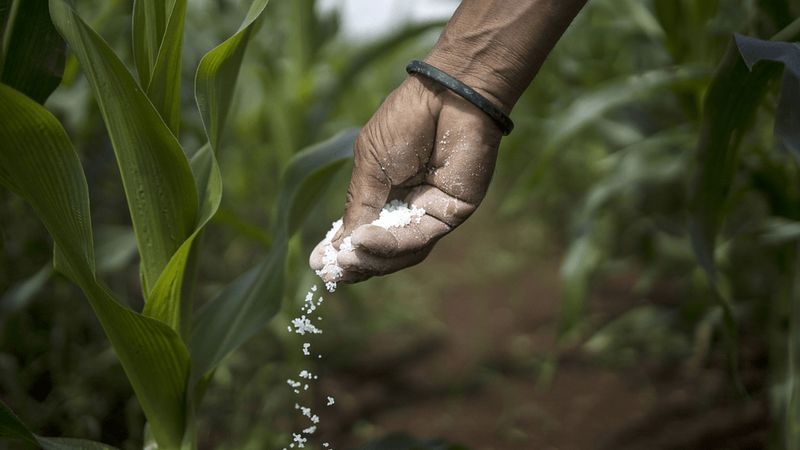Nitrogen prices up 250% relative to this time last year

Nitrogen prices are up 250% relative to this time last year, according to Teagasc tillage specialist, Ciaran Collins.
Speaking on the most recent edition of the Tillage Edge podcast, he confirmed that phosphate and potash prices had also risen over the past 12 months, although not to the same extent as nitrogen.
“In terms of what farmers can do to mitigate against these increases, it’s very much a case of getting back to basics. Soil tests cost 50c/ac.
“So, for example, soils that Index 4 for phosphorous (P) and potassium (K) will not need a dressing of these crop nutrients during the 2022 growing season.
“This represents a massive saving for growers and this really is the year to be looking at issues like this.”
He went on to point out that farmers should never overlook the value of lime, which is the cheapest fertiliser, he stressed.
“Lime is currently available at around €23/t. It is especially valuable, particularly if farmers get the chance to spread lime over the coming weeks ahead of spring crops.
“Tying all of these issues together is the development of a nutrient management plan, which relates to every field across the farm.”
Teagasc tillage advisors are highlighting the value of organic manures on cropping ground during 2022.
“In fields where soil indices are low, placing the likes of phosphate, rather than broadcasting it, is worth looking at,” confirmed Collins.
He continued:
“And, when taken to together, all of these decisions can make a significant difference across the farm business as a whole.
“But above all else, fertiliser must be targeted in terms of where it is most needed.”
Looking ahead at the prospects for spring crops, Collins said that the tipping point for growers will be the feasibility of achieving a break-even yield.
He explained:
“This issue normally crops up during years when cereal prices are coming under pressure.
“But assuming that fertiliser prices remain at current levels, there may well be farmers who decide not to plant certain fields or not touch parts of fields, such as wet headlands, where they know they will not be able to generate a return.”
Collins concluded:
“This will certainly be the case, where spring barley is concerned. But there are other spring cropping options available.
“Spring peas beans are a case in point. Both are legumes, so the need for applied nitrogen is very minimal. Growing such crops also plays a vitally important role within an overall tillage rotation.”
Read also
Official Release – December 17th! Crop & Price Navigator 2026/27
Ukraine’s harvest nears completion: Total grain output exceeds 56 mln tons
Wheat heads for worst week since June on global oversupply
‘Soybean GPT’ lands South Korea’s agriculture ministry in awkward situation
Thailand purchases 65 thsd tons of Argentine feed wheat
Write to us
Our manager will contact you soon



